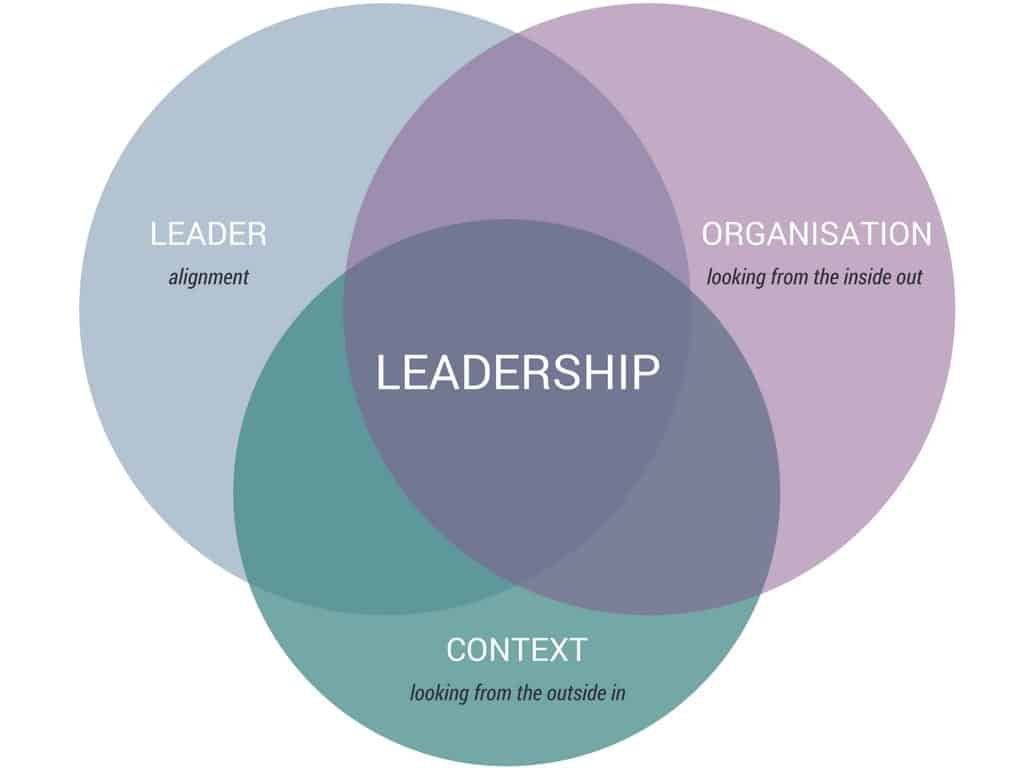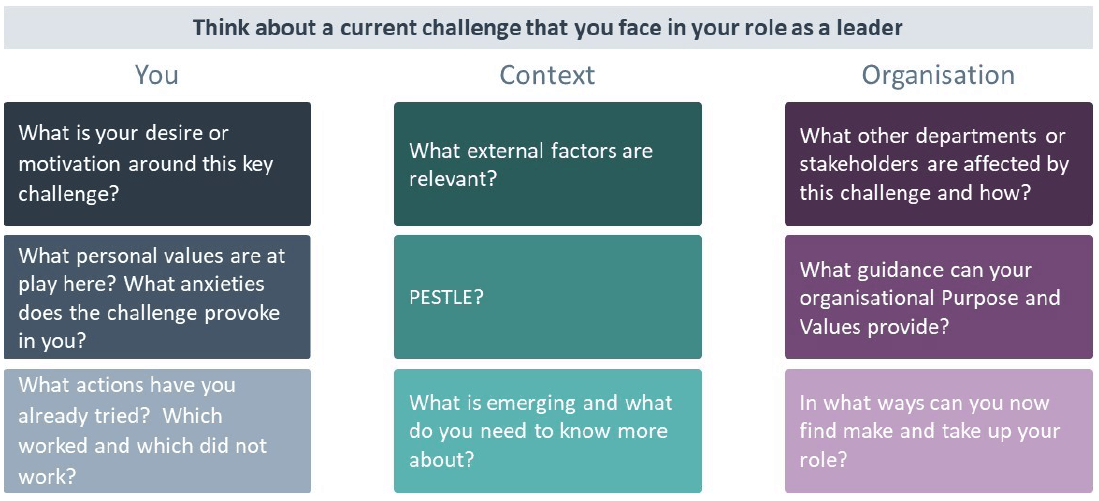
The ability to work to purpose is altogether critical if organisations are to be sufficiently adaptable and responsive in the face of changing market conditions. The traditional 3-5 year plan is no longer a viable way of leading. Instead a rooted sense of overarching purpose has become the key differentiator in guiding success. This provides the centripetal force which enables the people, resources and activities to coalesce. It gives form and shape to the boundary of the organisation system itself. So that, in the day to day operations as well as when the going gets tough or unpredictable, purpose serves as the guiding compass to help determine the best actions to be taken.
It is important to discover the question of purpose from three different perspectives: that of the organisational system, that of the business context in which the organisation operates, and that of the people who deliver the services that the organisation provides. Starting with an analysis from the organisation’s inside out, integrating this with an analysis from the business context’s outside in and finally creating a framework that can guide, align and orient employees.
By inside out I mean the board and those leading the organisation determining why they think their organisation exists? Answering questions such as, what does this organisation potentially offer to the world? What are its core skills and strengths? What do we want to offer to the world? What are our values? What is our hearts’ longing? What activities is the organisation engaged in right now? How are these related to overall purpose? What are our unique selling points? What brand promise or value does the organisation provide? And, what patterns of behaviour might stand in the way of our success?
Then looking to the strategic relevance of the local and global business context, the board/leaders need to answer questions from the outside in. What trends can we see emerging? Political, social, technological, economic, legal or otherwise? What does this tell us about the demands of the context on the organisation? What markets and opportunities are opening up? What potential challenges do we see? What disruptors are appearing or likely to emerge that would impact our organisational offer? What have we learnt? What can we inquire about further? How might all of this inform the organisation’s core purpose?
This foresight, when considered in relation to the questions asked at Step 1 above, will help the leaders to then answer the bigger questions about what the world needs from their organisation now and in the future. What is being called forth from them in the service of the context/world?
No organisation exists in a vacuum. If it is to succeed it must be in the service of some broader purpose in the world. In short, the context is completely indifferent to what happens inside any organisation unless it influences its responses to external demands. It is useful to remember this in business. There is no entitlement to success. The alchemy of success comes from engaging meaningfully with your context and trying your very best with the resources that you have internally.
I referred above to the third dimension of purpose which lies with the individual members of the organisation. This is because it is the people, as the key resource, who actually deliver the product or service that any organisation provides. It is they who are in direct contact with the customers and closest to the changing context. Less and less will they find their job description prescribed in advance as it might have been in the old hierarchical model. Instead now, with the new organisational reality, the work to be done will reveal itself in an organic emerging fashion.
Individual and organisational purpose need to be aligned so that there is as much overlap as possible, as little as possible in terms of differences and certainly not too many contradictions. Individuals need to feel that they can authentically and meaningfully take up their role, working to purpose on behalf of the whole.
Questions for individuals to inquire into might include what is my purpose in life and at work? What is my heart’s desire? What core skills and strengths do I possess? What values do I hold dear? What am I currently doing at work that serves? What should I let go of? What are the possible alignments and misalignments between me and the organisation? What have I learnt? What do I need to enquire about further? How can I now find, make and take up my role?
The experience of inside out, outside in or individual alignment can feel like dichotomies of either/or that may not in fact exist. System, context and the individual are themselves so inextricably interconnected and interdependent that maybe we should not be thinking of either/or but both/and. It is the synergistic alignment of the forces and energy of all three that actually defines purpose.
Purpose in that sense can never be static. Instead it needs to be calibrated and recalibrated, as required, so that it can be discovered and rediscovered as the context changes and changes, again and again. This relatedness, the one to the other, is then a living dynamic relatedness that is complex, changing and vital at all times.
The biological metaphor suggests that organisations, being shaped by their context and their people, are an integral part of all of co-creation. The enlightened organisation comes to see that:

Organisations need to translate their purpose and values into frameworks for success that can be used to recruit, develop, reward and retain the best talent. After that, perhaps the only significant role of leadership, independent of task and relationship skills, is to define, embody and defend organisational purpose. Kegan and Lahey speak of leadership that can hold the and/or contradictions of systemic living, that can problem-find, take a meta position and lead to learn.
Anyone who is willing to take up their role on the basis of their perceptions of contributing to the purpose of the organisation, and who is willing to be held accountable for what they do, is offering true leadership, notwithstanding where they sit in the organisational chart.
The art is in learning how to take up one’s role; how to integrate one’s own experience from each of the three domains of person, organisation and context; and thus to find the sweet spot that enables one to take action to serve the purpose of all three. That is real leadership.